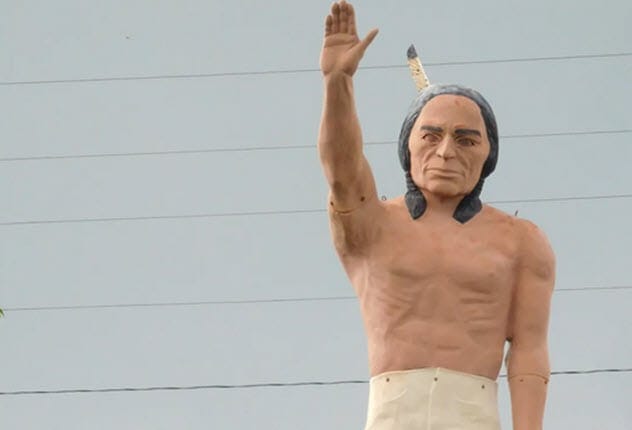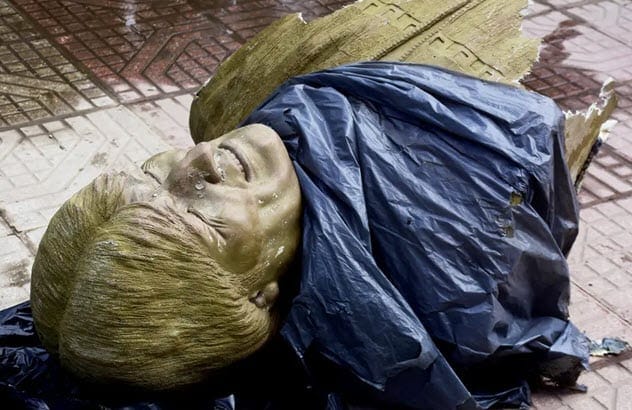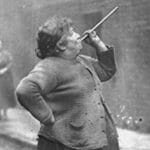Statues are more than just stone or metal; they’re reflections of our values and history. But what happens when those values change, or when the figures they represent are seen in a new, critical light? All over the world, statues have been removed, toppled, or relocated. Each event carries its own story of changing perspectives and historical reckoning.
Let’s explore ten instances where statues became flashpoints, leading to their removal and sparking discussions about who we choose to honor and why.
10. Edward Colston – Bristol, Britain
Edward Colston, a 17th-century merchant, was a significant figure in Bristol. However, his wealth came from his involvement with the Royal African Company, which transported around 84,000 African slaves. In Bristol, many landmarks bore his name, celebrating his philanthropy funded by the slave trade.
On June 7, 2020, protesters tore down Colston’s statue and threw it into Bristol Harbour. This act reflected a growing acknowledgment of the dark side of Colston’s legacy, overshadowing his philanthropic contributions.
9. Mahatma Gandhi – Accra, Ghana

A statue of Mahatma Gandhi, intended to symbolize his peaceful approach to conflict resolution, was removed from the University of Ghana in Accra. Many felt his earlier writings revealed racist opinions towards black Africans during his time in South Africa.
Students and faculty campaigned for its removal, arguing that honoring Gandhi conflicted with the university’s values of equality and respect. The statue was later relocated to the Kofi Annan Centre of Excellence.
8. Chief Pontiac – North Carolina, United States

A 23-foot-tall statue of Chief Pontiac, an 18th-century Native American warrior, stood outside a car dealership in North Carolina. The statue originally served as an advertisement for GM’s Pontiac cars, which used his likeness as a logo.
Following accusations of discrimination against a Native American woman by a dealership employee, the statue was removed. It was restored and moved to a museum in Michigan, preserving its history while addressing concerns of cultural insensitivity.
7. Thomas Jefferson and Christopher Columbus – United States
In recent years, statues of historical figures like Thomas Jefferson and Christopher Columbus have faced scrutiny. Jefferson, despite his role as a Founding Father, owned over 600 slaves. Columbus’s arrival in the Americas is viewed by some as the beginning of colonization and the oppression of indigenous peoples.
Statues of both figures have been toppled or removed across the United States, reflecting a reassessment of their legacies in light of modern values.
6. Evo Morales – Quillacollo, Bolivia

After Evo Morales was ousted from the presidency of Bolivia, a statue in his honor was torn down at the Evo Morales sports stadium in Quillacollo. Morales, who served as president for 14 years, had become a polarizing figure amid accusations of power grabs.
The removal of his statue symbolized a rejection of his political influence and a move to erase his image from the public sphere. The stadium was renamed the Quillacollo Olympic Sports Center.
5. Comfort Women – Manila, Philippines
A statue of a Filipina Comfort Woman, representing women sexually abused by the Japanese Imperial Army during World War II, was erected in Manila in 2017. The Japanese government lodged a formal complaint, leading to the statue’s removal.
The Philippine government removed the statue to avoid insulting Japan, highlighting the complex and sensitive nature of historical memory and international relations.
4. John A. Macdonald – Victoria, Canada

Sir John A. Macdonald, Canada’s first prime minister, played a crucial role in the country’s formation. However, his government also implemented the Indian Act, which led to the forced assimilation of indigenous children into residential schools.
A statue of Macdonald was removed from Victoria City Hall after reconciliation talks with indigenous tribes. The decision reflected a desire to address the harmful legacy of his policies and honor indigenous perspectives.
3. Michael Jackson – Manchester, Britain
Following the release of the documentary Leaving Neverland, which detailed allegations of child abuse against Michael Jackson, a statue of the singer was removed from the National Football Museum in Manchester.
The removal reflected a reevaluation of Jackson’s legacy amid serious allegations. The museum stated that the statue was inconsistent with their values.
2. Buddha – China
In China, the Communist Party has been systematically removing Buddhist statues and structures as part of a broader effort to control religious expression. Statues have been demolished or concealed for various reasons, often under the guise of urban planning or safety concerns.
These actions reflect the government’s push for secular socialism and the suppression of religious practices that don’t align with Party ideology.
1. Everything – Iraq
During its control of parts of Iraq, ISIS destroyed countless statues, monuments, and historical artifacts. The group ransacked museums, demolished archaeological sites like Nimrud, and destroyed religious symbols. They targeted anything that didn’t conform to their extremist ideology.
These acts were aimed at eradicating cultural heritage and imposing their worldview, representing a profound loss for Iraq’s history and identity.
The removal of statues isn’t just about taking down monuments; it’s about reevaluating history and deciding who we want to celebrate. These ten instances show how complex and varied these decisions can be, reflecting the ever-changing values of societies around the globe.
What do you think about removing statues? Share your thoughts in the comments below!










